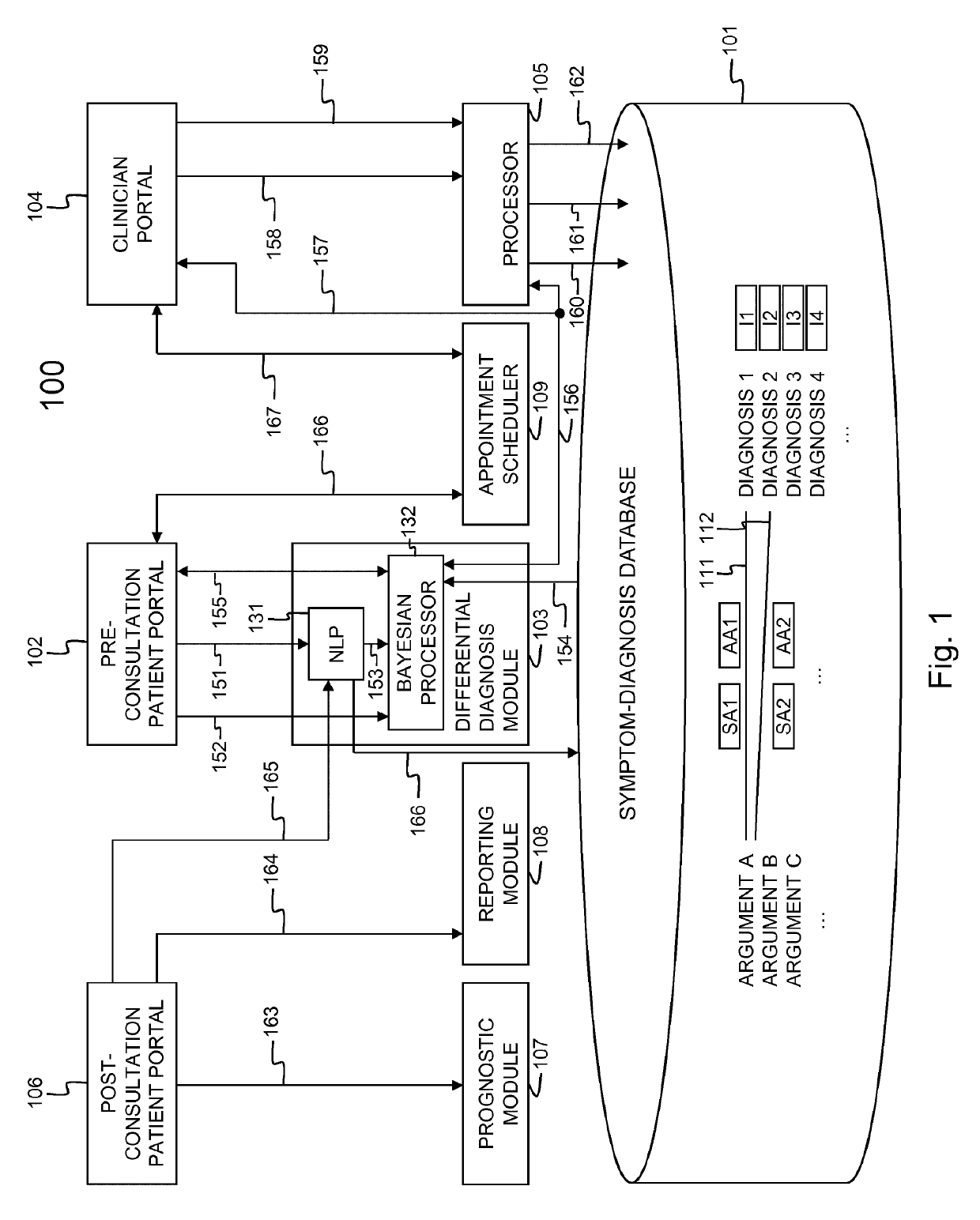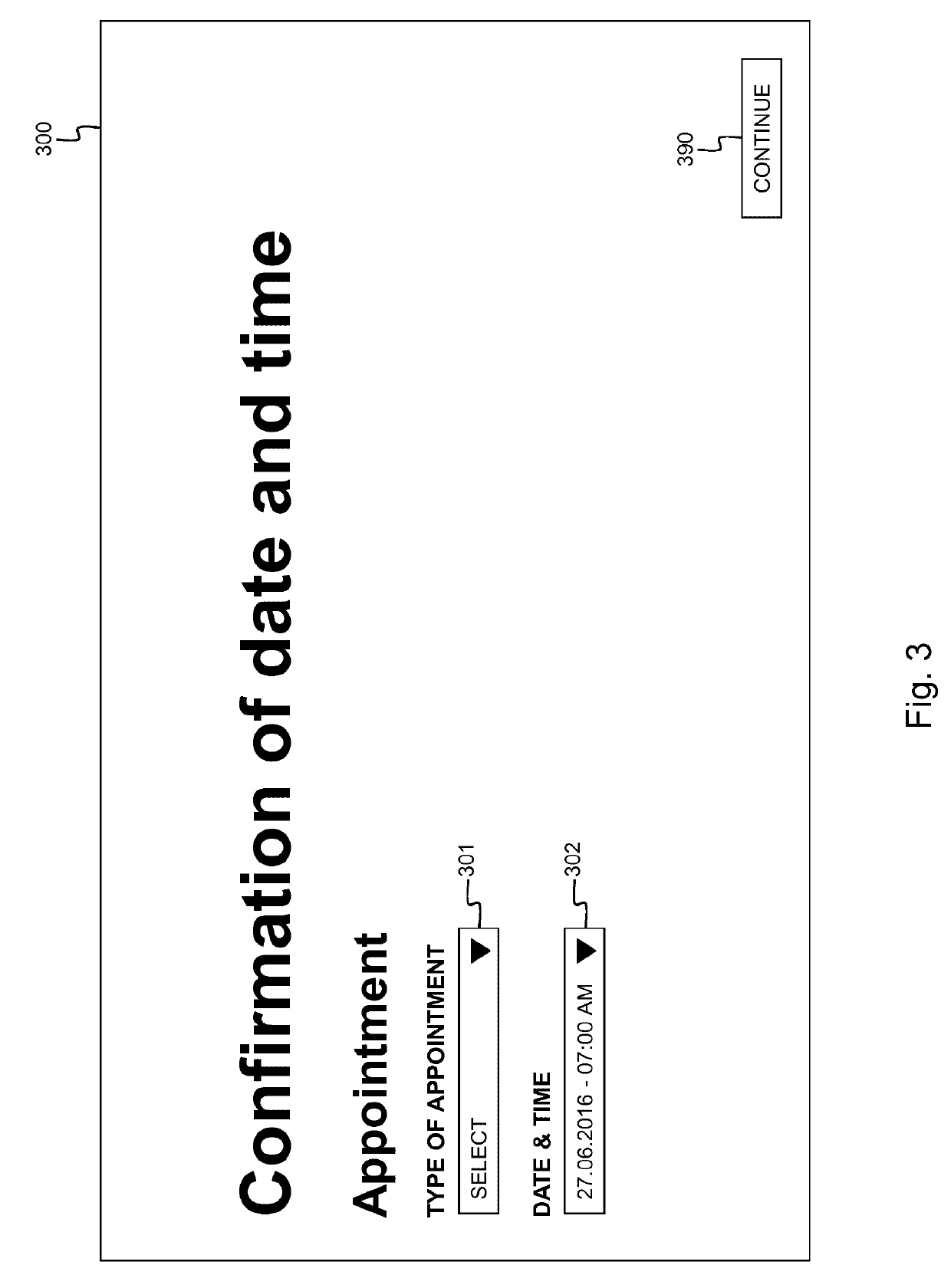A medical consultation support tool
a technology of medical consultation and support tool, applied in the field of medical consultation and diagnosis, can solve the problems of clinicians getting frustrated, patients and clinicians being frustrated, and existing systems providing no feedback on the usefulness of differential diagnosis, so as to achieve the effect of improving the correlation, improving the sensitivity value, and achieving the final diagnosis
- Summary
- Abstract
- Description
- Claims
- Application Information
AI Technical Summary
Benefits of technology
Problems solved by technology
Method used
Image
Examples
Embodiment Construction
)
[0070]FIG. 1 shows an embodiment 100 of the medical consultation support tool according to the present invention. The medical consultation support tool 100 comprises a symptom-diagnosis database 101, a pre-consultation patient portal 102, a differential diagnosis module 103, a clinician portal 104, a processor 105, a post-consultation patient portal 106, a prognostic module 107, a reporting module 108 and an appointment scheduler 109. The differential diagnosis module 103 comprises a natural language processor or NLP 131 and a Bayesian statistics processor 132. The symptom-diagnosis database 101 maintains a list of arguments, e.g. ARGUMENT A, ARGUMENT B, ARGUMENT C, . . . , a list of diagnoses, e.g. DIAGNOSIS 1, DIAGNOSIS 2, DIAGNOSIS 3, DIAGNOSIS 4, . . . , incidence values I1, I2, I3, I4, . . . for each of the diagnoses DIAGNOSIS 1, DIAGNOSIS 2, DIAGNOSIS 3, DIAGNOSIS 4, . . . , sensitivity values SA1, SA2, . . . linking arguments with diagnoses, and aspecificity values AA1, AA2,...
PUM
 Login to View More
Login to View More Abstract
Description
Claims
Application Information
 Login to View More
Login to View More - R&D
- Intellectual Property
- Life Sciences
- Materials
- Tech Scout
- Unparalleled Data Quality
- Higher Quality Content
- 60% Fewer Hallucinations
Browse by: Latest US Patents, China's latest patents, Technical Efficacy Thesaurus, Application Domain, Technology Topic, Popular Technical Reports.
© 2025 PatSnap. All rights reserved.Legal|Privacy policy|Modern Slavery Act Transparency Statement|Sitemap|About US| Contact US: help@patsnap.com



